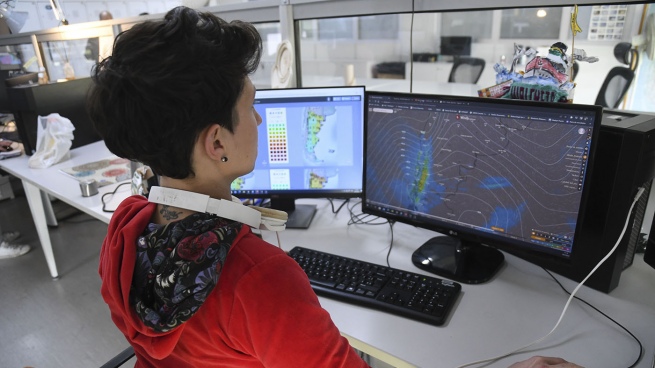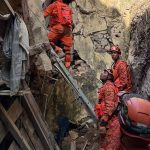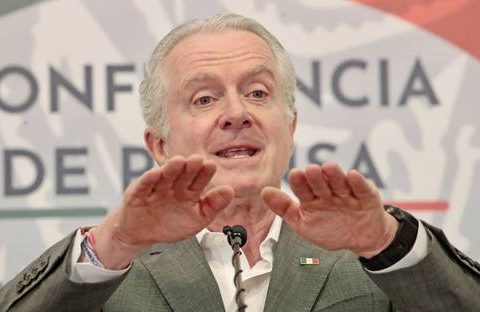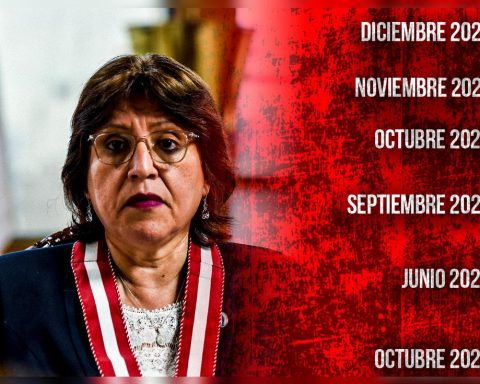On the occasion of the celebration of 150 years of the National Meteorological Service (SMN)Télam made a tour of the central headquarters of that organization, where information is collected from stations throughout the country, forecasts and alerts are made, and then issued to the public and productive sectors.
Upon entering the property, located at Av. Dorrego 4019, Buenos Aires neighborhood of Palermo, the observation field stands.
“In the elaboration of any type of forecast the first thing that is needed is to measure the atmosphere. Meteorologists need to be constantly observing and taking measurements of it, both near the ground and in height. The measurements that are known as conventional (temperature, precipitation, radiation) are those that are made in the field of observation,” explained Cindy Fernández, meteorologist and service communicator.

In Argentina there are around 125 meteorological stations distributed in the country and six of them are in Antarctica; 50 stations are more than 100 years old and 11 are considered centuries-old and secular, that is, they are not only a century old but have carried out measurements uninterruptedly since their creation.
“In some, only observations are made. Others add other measurements such as ozone, atmospheric gases, the Earth’s magnetic field; and then there are those that make specific forecasts such as the Aeronautical Meteorology Office, which makes specific measurements for aviation”he detailed.
The field of observation is made up of the pluviometer, which measures the amount of rain and snow that has fallen, and the heliophanograph, which measures the number of hours with sunlight, that is, direct radiation.
“The mechanical rain gauge has a jar with a millimeter ruler. You write down the data and throw the water away. Measurements are made at a certain time. The electronic one has gutters like two connected spoons that, due to the weight of the water, pour into a container. It stores data in the computer, that’s why the precipitation rate, which is how fast it rained, cannot be measured with the mechanic,” Fernández explained during the tour.

Meanwhile, at heliophanograph is placed a strip of paper and the sun is burning without igniting fire and leaving marked“it is a mechanism that is a lot of years old, but it does not break”.
That is why the climate specialist emphasized that all mechanical instruments have their equivalent in the electronic one, that is, a “more modern” version, but that “mechanical instruments are still used today because they do not depend on the power and they always work. For the electronics to work you have to ensure an Internet connection to transmit the data. They all have their pros and cons, but no element is supplemented, rather it complements each other”.
There are also wind instruments, such as the weather vane, which measures the speed of the wind and the anemometer, its intensity, they have to be around 10 meters high by international convention; and the meteorological shelter, a kind of box to protect the thermometers that measure the humidity and temperature of the air.

Measurements in the latter have to “be done quickly so as not to modify the data”since the sun heats the material, hence the doors are on the opposite side from where it comes out.
For this reason, in the stations of Antarctica, where you have “the polar day”, when the sun turns 360 degrees, the shelters are pyramid-shaped and “you enter from below”.
Regarding how the data is collected, Fernández pointed out that the stations have meteorological observers, “because even today there is no one to make all the observations”, for example, the amount of covered sky or the types of clouds; and in the stations that are all electronic “data is lost, which a person can provide us.”
Based on the observers, each office in the country collects and sends the data to the central headquarters, working 24 hours a day, 365 days a year.
The service also has mobile weather stations on the premises, which tour events and cities in the country, being a measurement and forecasting office on wheels.

“If you want to mediate in the middle of the mountain because there is an event and there is no fixed season, you go with this”assured the meteorologist.
Upon entering the building, you can find historical instruments of the body that was created on October 4, 1872, under the presidency of Domingo Sarmiento.
Standing in front of the laboratory area (where the elements are taken to calibrate or repair them), Fernández said that the SMN works as an international calibration center, certified by the World Meteorological Organization (WMO), therefore the meteorological services of other countries calibrate their instruments at this venue.
The data obtained in the field, goes through a quality control to see that they do not have typing errors, they are processed in computers such as the HPC, which crosses data and performs simulations; and are stored in a base to be used by all areas of the meteorological service.

The screens with satellite and radar images make up the weather forecast and alerts arealocated on the first floor, where the information is analyzed and the meteorologists capture what they think will happen in the future, that is, they make the forecast.
“The forecasts and alerts are issued for the entire country. The seven and three-day forecasts, the regional ones, and we have international services and responsibilities such as the Volcanic Ash Warning Center and the maritime safety center, since a quarter of the Atlántico Sur is under our responsibility,” said Marcos Saucedo, director of the area.
Regarding the Early Warning System (SAT), which began operating in 2020 in this area, Fernández mentioned that not only meteorological factors are taken into account, but also social factors, the vulnerability and exposure of people, to them.

“If you have rains for the Luján area, the day of the procession to the Virgin, they may not be as strong, but considering all those people on the exposed street, you decide to issue an alert”exemplified.
In addition, the center has an area of climatology, agrometeorology, research and development; and communication and press, since “our responsibility is to be able to count on language that is not so technical and to be able to educate about different meteorological phenomena,” Fernández concluded.


















